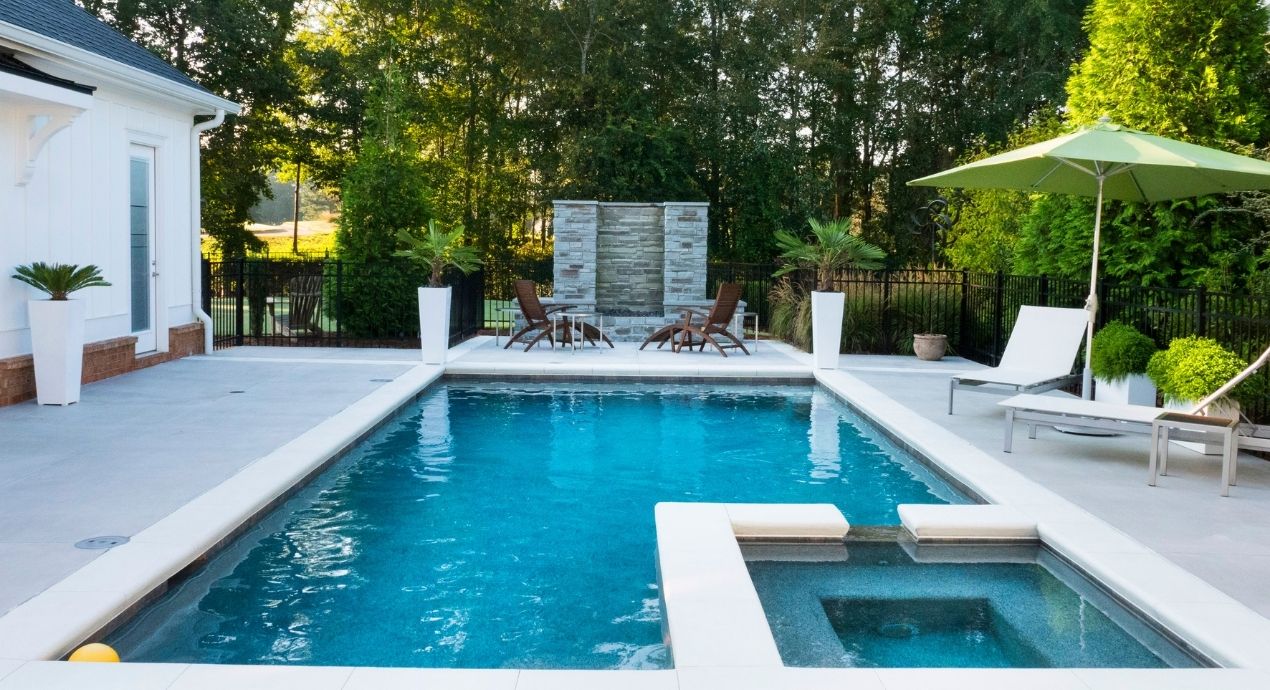
Contemplating coverage?
Subscribe to receive our emails & get
$200 off!
Have questions?
Call us: (833) 544-8273


Written By Roger Marx
Converting your traditional chlorine pool into a saltwater system can transform your swimming experience. Saltwater pools are known for being gentler on the skin and eyes, lower in maintenance, and more cost-effective in the long run. If you’re curious about making the switch, here’s everything you need to know to convert your pool to saltwater the right way.
Saltwater pools use a salt chlorine generator to convert salt into chlorine, providing consistent sanitation without the strong chemical smell or skin irritation typical of traditional chlorine pools.
1. Test Your Pool’s Chemistry
Start by testing the water to determine its current condition. Check levels for pH, alkalinity, calcium hardness, and stabilizer (cyanuric acid).
2. Balance the Water
Adjust pH, alkalinity, and other levels to ideal ranges. A properly balanced pool ensures your salt system works effectively.
3. Choose the Right Salt Chlorine Generator
Select a salt system rated for your pool’s size in gallons. Make sure it includes a control panel and cell that will generate chlorine from salt.
4. Install the Salt Chlorine Generator
Most systems require minor plumbing adjustments. You can DIY with experience or hire a pool technician. The salt cell is usually installed after the filter and heater.
5. Add Pool-Grade Salt
Use high-purity (99%+) sodium chloride. The amount depends on your pool size. Typically, you’ll add 200–400 pounds of salt.
6. Turn On the System
Once the salt is fully dissolved, power up the generator and let it begin producing chlorine. Monitor closely during the first few days.
If you’re considering a conversion, Liberty Home Guard offers home warranty plans that cover pool equipment like pumps, heaters, and saltwater systems. We help protect your investment and reduce repair costs.
Switching to a saltwater pool can be a smart, refreshing upgrade for your home. With softer water, easier upkeep, and long-term cost savings, it’s no surprise more homeowners are making the switch.
Ready to dive into a saltwater pool? Contact Liberty Home Guard to find out how our plans can support your pool equipment and ensure a smooth conversion.You can also speak with our team by calling (866)-931-1806.
Converting to a saltwater pool can be worth it for those seeking easier maintenance, lower chemical costs, and gentler water on skin and eyes. Saltwater systems automatically regulate chlorine levels, reducing the need for manual adjustments, but the upfront costs for a salt chlorine generator and initial salt can be significant. While saltwater is less harsh, it may corrode certain pool components, requiring regular upkeep. If you value convenience and comfort, a saltwater pool can be a great investment, though it’s important to weigh the initial costs and potential long-term maintenance.
Saltwater pools have some drawbacks, including higher upfront costs for installing a salt chlorine generator and potential corrosion of metal fixtures, pool liners, and heating systems. They also require electricity to run the generator, adding to energy expenses. Maintenance, while easier, still involves monitoring salt levels and ensuring components are saltwater-compatible. To protect your investment, consider a saltwater pool warranty to cover potential repairs and maintenance.
Converting a pool to saltwater typically costs between $1,500 and $2,500, depending on the size of your pool and the salt chlorine generator you choose. Additional expenses include the initial salt and any upgrades to ensure your pool components are saltwater-compatible.
Stay Ahead of Potential
Home Mishaps!
Subscribe to our Liberty Home Guard Newsletter and gain access to exclusive content that ensures your peace of mind.